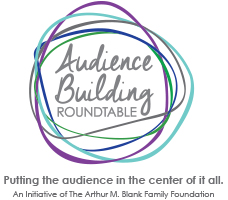By Danielle P. Varner, Springer Opera House
Organizations near the Springer Opera House were investing in high-tech marketing strategies by the minute. However, the historic Springer Opera House building was becoming archaic. We had beautiful, ornate rooms and a breathtaking stage. What we didn’t have was a way to let people walking and driving by know that. Our downtown district is bursting with more tourists, residents, and students every day. We had to find a way to draw them in as they were passing by.
Other theaters have flashy, eye-catching signs that draw in curious consumers as they ponder what to do on their Friday evening. This attractive technology was an advantage that we didn’t have. We had no way to draw people passing by into our gorgeous, historic building – an opportunity to turn those people into audience members. We struggled to let passers-by know the magic that was happening behind our brick façade.
It’s Like Trying on a New Outfit
In October 2016, we received an audience building grant from The Arthur M. Blank Family Foundation’s Audience Building Roundtable initiative - and we used the grant money to “update” the Springer. We purchased five digital display screens and stands to turn into our “display signage”; this gave us the confidence of a new outfit for our building.
The signs that were placed in our windows engaged existing and potential audience members that walked by on their way to work, giving them ideas for their weekend plans. Consumers don’t always consult websites or make phone calls to get information. They certainly don’t make an extra trip down to the theatre to ask what’s playing this weekend and ticket prices. The best way to catch people’s eyes in our community of Columbus, Georgia, was the tech-savvy signage that we placed in our exterior windows and in our lobby.
Digital Signage Lured New Audiences Inside
The results were fantastic. The signage brought audiences inside: we gained 1,795 new-to-file patrons since the installation of our new screens! These new patrons produced a 4% increase in single ticket purchases. We have also seen a significant improvement in millennial attendance – up by 12% - giving the Springer a younger audience demographic than we had previously been able to attract.
We’re now working on converting our playbills to the digital screen. We’re gradually putting more information on the digital screens, such as our Springer Society donor list, advertisements for our shows, and cast biographies. This saves money on playbill printing and is economically efficient. However, we’re doing this slowly so that our existing audience can become accustomed to a new way of receiving information.
And Now We’re Moving Faster….
Since embarking on our audience building journey with the Audience Building Roundtable of The Arthur M. Blank Family Foundation, we’ve changed many aspects of our audience promotion and engagement. We have focused our marketing on specific audience segments; we have generated more return on investment for our sponsors with new digital signage that reaches more people on our high-traffic street; and we have experimented with new ways of retaining the audience we have.
We are moving faster and have higher goals for our audience attraction, retention, and engagement. The implementation of interactive technology, digital signage, and software was one step in the right direction. New signage and displays in and around our building mean that we have joined the digital age!
We intend for the Springer – a national historic landmark - to build on its significant history to keep our current audience, attract new audiences, and drive stronger awareness in our community. We have just begun. Another project to truly “turn the Springer inside out” for our community is underway and we can’t wait to build on our initial success.
Keywords: Historic Building, lack of signage, digital siganage, new to file patrons, ROI for sponsors, stronger awareness in the community, attract new patrons
